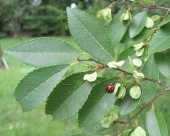posted 12 years ago
Thanks for the link.
It didn't answer all my questions, but it is a start.
Your test idea is a good one, and I may do it. However, I am not sure how easy it would be to accurately replicate conditions in my hugelkultures in a pot. So the test might give me one result and the actual thing another.
I will have to use lots of light, twiggy material, because that makes up the bulk of the tree, and because we will be using the trunks as firewood.
Here is a few more questions. If I left the wood lying over the winter, thus losing the leaves and perhaps leaching out the wood a bit, and then inoculated my mound with mushrooms, would I have any problems? In theory, I know this should work, but it is a lot of work building the mounds, and I don't want to take a risk of ruining all that space.
I will also ask this question on the Fungi forum.








